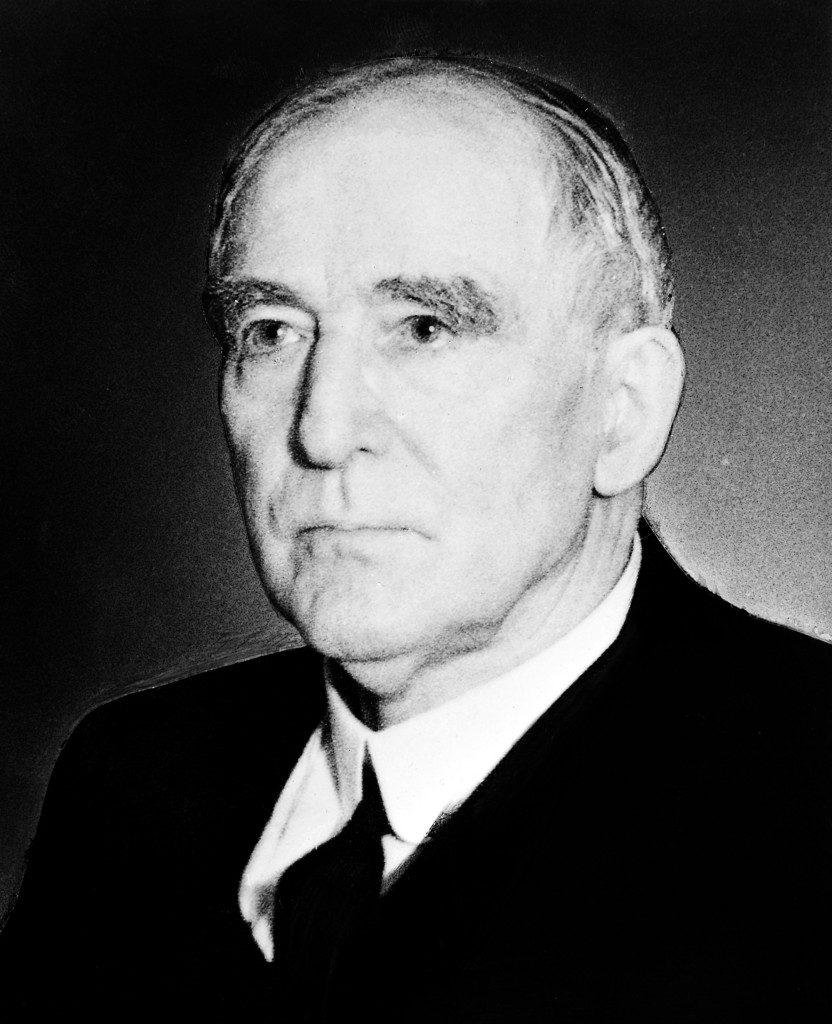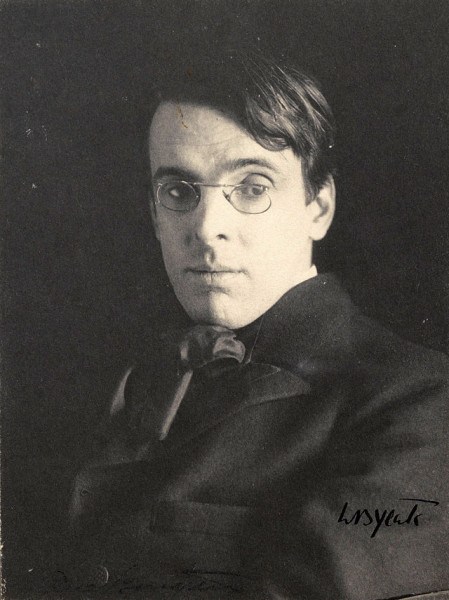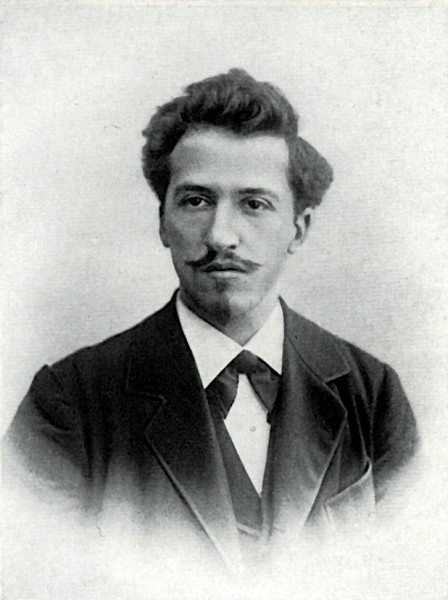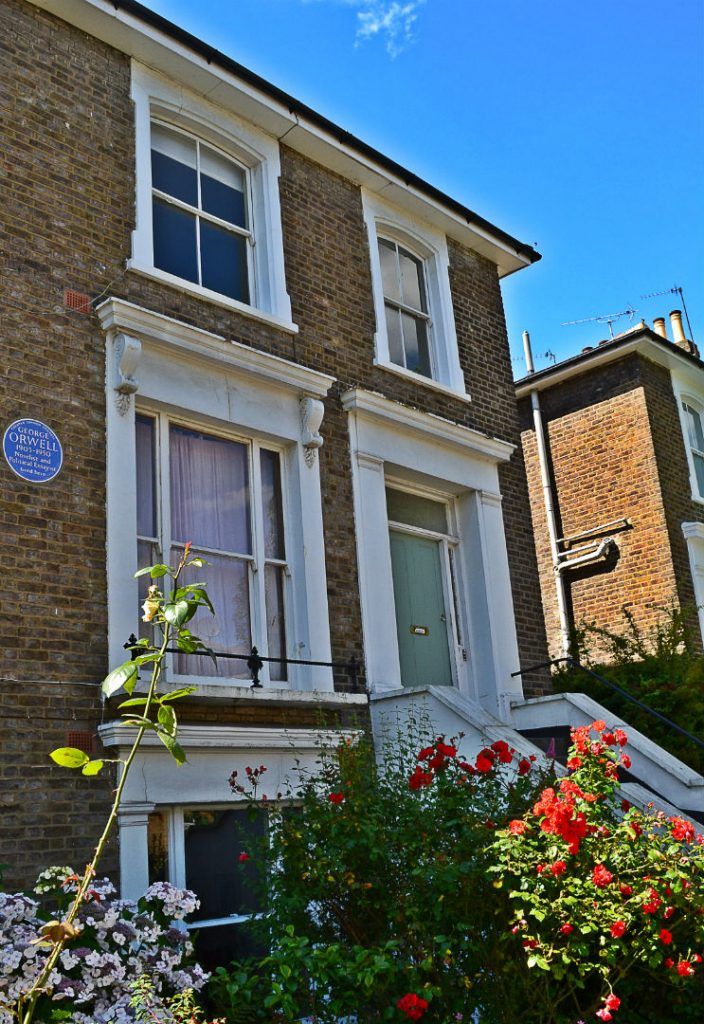You’re walking down a fairly nondescript north London street. It’s summer, but it’s probably raining. Your food shopping is heavy, and your phone battery has just run out. But wait – what’s that? A flash of blue on the tall brick building opposite.
Intrigued, you cross over, and find out via a blue plaque on the wall that George Orwell – one of the 20th century’s most amazing and prophetic writers – used to live here. Ah well, you think. If George carried his shopping down here, I reckon I can probably put up with it.
And he’s not the only one. Let’s begin at Camden Town tube station.
WELLCOME

Where: Sir Henry Wellcome, 6 Gloucester Gate, London NW1 4HG
Why: A quick stroll up Parkway to Regent’s Park is the house of arguably the coolest pharmacist ever: Sir Henry Wellcome. Born in the Wild West, he founded a pharmaceutical company, got filthy rich, bought himself more historical objects than most museums could ever afford – and then set up the Wellcome Trust to fund pioneering medical research after his death. These artefacts are now visible at the Wellcome Collection, one of London’s best museums (and not far down the road, effectively opposite Euston station).
Directions: Now walk up towards Primrose Hill – through the park if you like, or on the Outer Circle, then cross the canal and turn right on Prince Albert Road directly in front of the hill. Turn left at the edge of the greenery, then right when you hit Fitzroy Road.
YEATS, PLATH, ENGELS

Where: WB Yeats, 23 Fitzroy Rd, London NW1 8TP; Sylvia Plath, 3 Chalcot Square, Primrose Hill, NW1 8YB; Friedrich Engels, 122 Regent’s Park Road, Primrose Hill, NW1 8XL
Why: Bit of a literary enclave this, with the former homes of three epoch-defining writers clustered in close succession. First up on Fitzroy Road is the home of WB Yeats, an Irish poet and dramatist who is responsible for arguably some of the most beautiful verse in English. “The world is full of magic things,” he once wrote, “patiently waiting for our senses to grow sharper.”
In a pleasing bit of synchronicity, tragic poet Sylvia Plath actually rented the very same flat years later when she lived in the area – she was excited to discover WB Yeats had lived there. Her blue plaque is round the corner though, left onto idyllic Chalcot Square. Number 3 is the home she shared with Ted Hughes before their separation, and her ultimate suicide, at 23 Fitzroy Road when she was just 30 years old.
Only a little further on, back onto the main street leading from Primrose Hill to Chalk Farm tube, is the house of Friedrich Engels – one of the fathers of modern communism. Alongside Karl Marx, the German political theorist and philosopher wrote The Communist Manifesto and Das Kapital.
Refuel: Lovely boozers tucked away, from the Princess of Wales to The Pembroke and The Lansdowne.
Directions: Follow Regent’s Park Road round and cross over the railway bridge. Walk down past Chalk Farm tube station Turn left up Haverstock Hill. In a few minutes, go right up Parkhill Road.
MOORE, MONDRIAN

Where: Henry Moore, 11A Parkhill Rd, London NW3 2YH; and Piet Mondrian, 60 Parkhill Rd, London NW3 2YT
Why: Two world famous artists for the price of one here. First up is Henry Moore, English sculptor extraordinaire. He’s best known for his monumental bronze sculptures dotted around the globe as public works of art – you might have seen them at the Tate or in the grounds of Kenwood House, outside the House of Lords or at Kew Gardens.
Further up is the former abode of abstract painter Piet Mondrian. In fact it’s no surprise Mondrian lived here: this area was a hotbed for artists for a short period between the two world wars and the clan even helped him get a flat in the area. As well as Moore, Barbara Hepworth and her second husband Ben Nicholson lived round the corner and Naum Gabo, Roland Penrose, Cecil Stephenson and art critic Herbert Read – who called the area “a nest of gentle artists” – lived nearby. But they weren’t necessarily popular. When Read displayed Mother and Child, by Moore, in his front garden, the local paper apparently got up a campaign against it.
Sadly the artists were chased out of London by the Second World War by around 1940, Moore to the English countryside and Mondrian to New York, who wrote: “For art it was too difficult in London.”
Directions: Wander down Tasker Road and through the charming cut-through Alan Cheales Way (which snakes around St Dominic’s Priory) to Malden Road. Turn left at the junction with Prince of Wales Road and keep straight until the old Pizza Express building. Now cross over; our final destination is just up behind the Abbey Tavern.
ORWELL

Where: George Orwell, 50 Lawford Road, Kentish Town, NW5 2LN
Why: He wrote some of the most influential works of literature in English, from Animal Farm to 1984. But it was a move to Lawford Road which put Orwell’s career on the right tracks. And that was after the peripatetic writer had done a short stint at a flat on Parliament Hill, right by Hampstead Heath, where there’s also a plaque.
Orwell, who was working on early novel Keep the Aspidistra Flying during his time here, shared three rooms on the
top floor with writers Michael Sayers and Rayner Heppenstall. He slept at the back where they dined together, mostly on spaghetti, at a large table. Heppenstall was even despatched daily to the Duke Of Cambridge on the corner (now flats) to bring back jugs of beer.
And while you contemplate that, cast a glance at neighbouring Camden School for Girls, where, in the 19th century,
pioneering cheerleader for female education Frances Buss was headteacher.
And finally, smokers may wish to pay tribute to keen puffer Orwell by sparking up a cigarette.
Jennifer reports on “mainly foreign news, health & women”. Follow her on Twitter @jriggers
Please support us if you can
In October 2020, Kentishtowner will celebrate its 10th birthday (unbelievable, right?). But with the demise of our free independent monthly print titles due to advertising revenues in freefall, we need your support more than ever to continue delivering cultural stories that celebrate our neighbourhoods. Every reader contribution, however big or small, is invaluable in helping the costs of running the website and the time invested in the research and writing of the articles published. Support Kentishtowner here for less than the price of a coffee – and it only takes a minute. Thank you.


